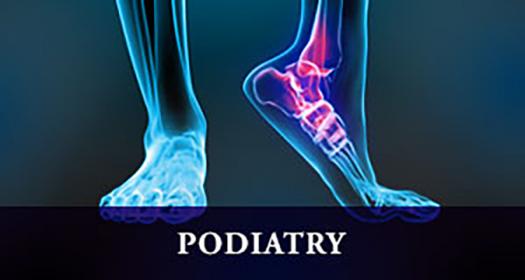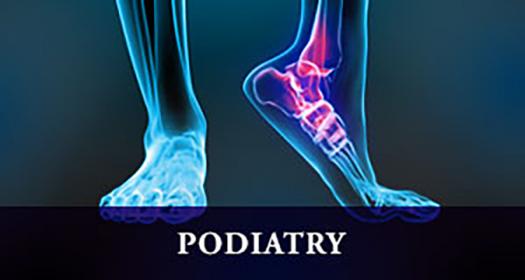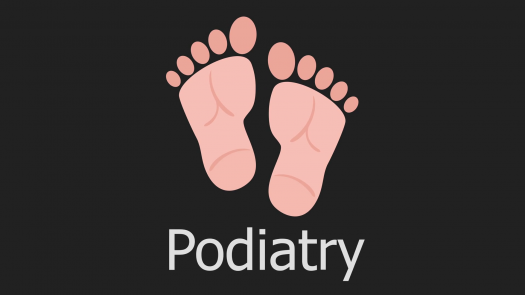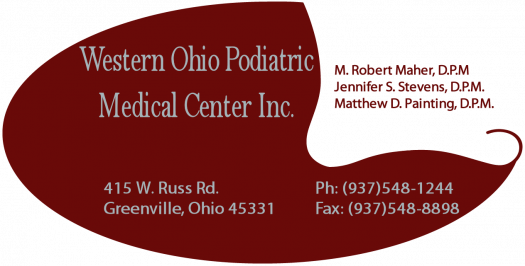Podiatry And Medical Test Prep

Podiatry? I bet many non-health related professional don't know what that means. Let me give you a formal definition: A Podiatrist who is also known as a Doctor of Podiatric Medicine(DPM) is a doctor that diagnose and treat diseases, disorders and injuries to the foot and lower leg. Well, how about that. Now you know who a podiatrist is.
Are you confident you know more?
Take this quiz to find out how much you know.
- 1.
The side effects of NSAIDS include the following except
- A.
Arthritis
- B.
Heart burn
- C.
Dyspepsia
- D.
Nausea
Correct Answer
A. ArthritisExplanation
The question asks for a side effect of NSAIDs that is not included in the given options. The options provided are heartburn, dyspepsia, and nausea. Arthritis is not a side effect of NSAIDs, but rather a condition that NSAIDs are commonly used to treat. Therefore, the correct answer is arthritis.Rate this question:
-
- 2.
Which of the following drugs can be used to treat Candida Albican infection?
- A.
Tolnaftate
- B.
Ibuprofen
- C.
Itraconazole
- D.
Tetracycline
Correct Answer
C. ItraconazoleExplanation
Itraconazole can be used to treat Candida Albican infection. This drug belongs to the class of antifungal medications known as triazoles. It works by inhibiting the growth of the Candida fungus, which helps to eliminate the infection. Itraconazole is commonly prescribed for various fungal infections, including those caused by Candida Albicans. It is effective in treating both localized and systemic infections caused by this fungus.Rate this question:
-
- 3.
The Hypothalamic-Pituitary-Adrenal axis regulates many processes including the following except
- A.
Dentition
- B.
Digestion
- C.
Stress
- D.
Sexuality
Correct Answer
A. DentitionExplanation
The Hypothalamic-Pituitary-Adrenal axis is responsible for regulating various processes in the body, such as stress response, digestion, and sexuality. However, it does not directly regulate dentition, which refers to the development and arrangement of teeth. Dentition is primarily influenced by genetic factors and oral hygiene practices.Rate this question:
-
- 4.
The side effects of NSAIDS include the following except
- A.
Arthritis
- B.
Heart burn
- C.
Dyspepsia
- D.
Nausea
Correct Answer
A. ArthritisExplanation
The question asks for a side effect of NSAIDs that is not included in the given options. The options provided are heartburn, dyspepsia, and nausea. Arthritis is not a side effect of NSAIDs, but rather a condition that NSAIDs are commonly used to treat. Therefore, the correct answer is arthritis.Rate this question:
-
- 5.
Infliximab is useful in which of the following immune diseases?
- A.
Rheumatoid arthritis
- B.
Lung inflammation
- C.
Peptic ulcer
- D.
Kidney failure
Correct Answer
A. Rheumatoid arthritisExplanation
Infliximab is a medication that is commonly used to treat immune diseases, specifically rheumatoid arthritis. Rheumatoid arthritis is an autoimmune disorder where the immune system mistakenly attacks the joints, causing inflammation, pain, and swelling. Infliximab works by targeting and neutralizing a specific protein in the body that is responsible for promoting inflammation. By blocking this protein, infliximab helps to reduce the symptoms and progression of rheumatoid arthritis. Therefore, infliximab is not useful in lung inflammation, peptic ulcer, or kidney failure, but it is specifically indicated for the treatment of rheumatoid arthritis.Rate this question:
-
- 6.
Which of the following drugs is recommended for asthmatic patients?
- A.
Paracetamol
- B.
Cromolyn
- C.
Phosphorus capsule
- D.
ORS
Correct Answer
B. CromolynExplanation
Cromolyn is recommended for asthmatic patients because it is a medication that helps prevent asthma attacks by reducing inflammation in the airways. It is often used as a preventive treatment to help control and manage asthma symptoms. Paracetamol is a pain reliever and fever reducer, not specifically indicated for asthma. Phosphorus capsules and ORS (Oral Rehydration Solution) are not typically used in the treatment of asthma.Rate this question:
-
- 7.
Which of these is a type of Angiotensin Receptor Blocker?
- A.
Oriotarn
- B.
Ibrutan
- C.
Losartan
- D.
Duntarn
Correct Answer
C. LosartanExplanation
Losartan is a type of Angiotensin Receptor Blocker. It is commonly used to treat high blood pressure and heart failure. It works by blocking the action of a hormone called angiotensin II, which causes blood vessels to narrow. By blocking this hormone, losartan helps to relax and widen the blood vessels, reducing blood pressure and improving blood flow.Rate this question:
-
- 8.
Which of these is an example of intravenous 3rd generation cephalosporin?
- A.
Polymyxin B
- B.
Bacitracin
- C.
Neomycin
- D.
Ceftriaxone
Correct Answer
D. CeftriaxoneExplanation
Ceftriaxone is an example of an intravenous 3rd generation cephalosporin. Cephalosporins are a class of antibiotics that are effective against a wide range of bacteria. Ceftriaxone is commonly used to treat serious infections such as pneumonia, meningitis, and urinary tract infections. It is given intravenously, meaning it is administered directly into the bloodstream, allowing for rapid and effective delivery of the medication. Ceftriaxone is a third-generation cephalosporin, which means it has a broad spectrum of activity against both gram-positive and gram-negative bacteria.Rate this question:
-
- 9.
Which of the following is not a beta-lactam antibiotic?
- A.
Ibuprofen
- B.
Penicillin
- C.
Cephalosporin
- D.
Monobactam
Correct Answer
A. IbuprofenExplanation
Ibuprofen is not a beta-lactam antibiotic because it does not contain the beta-lactam ring structure that is characteristic of beta-lactam antibiotics such as penicillin, cephalosporin, and monobactam. Beta-lactam antibiotics are a class of antibiotics that are effective against a wide range of bacteria by inhibiting the synthesis of bacterial cell walls. Ibuprofen, on the other hand, is a nonsteroidal anti-inflammatory drug (NSAID) that is commonly used for pain relief and reducing inflammation.Rate this question:
-
- 10.
Negative effects of beta blockers include the following except
- A.
Sedation
- B.
Acute asthma
- C.
Brain damage
- D.
Impotence
Correct Answer
C. Brain damageExplanation
Beta blockers are medications commonly used to treat conditions such as high blood pressure and heart disease. They work by blocking the effects of adrenaline on the body's beta receptors, leading to a decrease in heart rate and blood pressure. While beta blockers can have side effects, such as sedation and impotence, brain damage is not typically associated with their use. Therefore, the correct answer is "Brain damage."Rate this question:
-
- 11.
Which of theservice is not a calcium channel blocker?
- A.
Procadia
- B.
Calan
- C.
Capoten
- D.
Cadizen
Correct Answer
C. CapotenExplanation
Capoten is not a calcium channel blocker. It is an angiotensin-converting enzyme (ACE) inhibitor that is used to treat high blood pressure and heart failure. Calcium channel blockers, on the other hand, work by blocking the entry of calcium into the cells of the heart and blood vessels, resulting in relaxation of the blood vessels and reduced workload on the heart. Examples of calcium channel blockers include Procadia, Calan, and Cadizen.Rate this question:
-
Quiz Review Timeline +
Our quizzes are rigorously reviewed, monitored and continuously updated by our expert board to maintain accuracy, relevance, and timeliness.
-
Current Version
-
Mar 21, 2023Quiz Edited by
ProProfs Editorial Team -
Oct 26, 2018Quiz Created by
AdewumiKoju
 Back to top
Back to top












